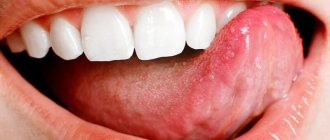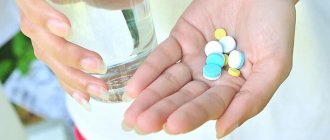What type of stool should a healthy person have?
The place where feces come from is the intestinal tract, its lower sections. Feces are the final product of food processing, the formation of which occurs under the influence of biochemical processes.
Feces appear in the large intestine from chyme, as the liquid or semi-liquid contents of the digestive tract are called, which includes food debris, gastric and intestinal juices, gland secretions, desquamated epithelial cells and microflora. As a result of the absorption of water, the lump that enters the distal sections changes its structure and turns into feces. From 400 grams of chyme, 150-200 grams of feces are formed.
The photo shows what human feces consists of.
The correct stool structure of a healthy body includes 70-75% water, mucus, and fat.
Feces contain approximately 1/3 of food residues, the same parts of the secretions of the digestive organs and microbes. Microorganisms are dead in 95% of cases.
Why feces do not sink in water is due to their structure. They are characterized by a porous structure and gas enrichment. This creates their buoyancy in the toilet. However, when the pores are filled with water, the excrement will drown after a while. Excessive buoyancy indicates an excessive concentration of fats and gases in the stool. If, on the contrary, the feces immediately sink, this indicates that they are saturated with “bad” cholesterol and toxins.
Normal feces are a sausage 10-20 centimeters long, uniform in color, composition and soft consistency. It does not contain any impurities of blood, foam, or pus. Mucus in small quantities is acceptable. Brown stool is more common.
However, the nature of stool in different people may differ from the standard, which is not necessarily a sign of pathology. Its shape, color, smell, length, diameter, thickness depend on a person’s eating habits, the amount of food and water consumed, the structural features of the intestines, diseases, and so on.
How much does feces weigh?
The weight of bowel movements in a particular person depends on the volume and quality of food and water. The latter directly affects the indicator: with constipation, the concentration of fluid in the stool is low, with diarrhea it is high, which causes weight changes. It ranges from 200 to 900 grams. The norm is calculated using the formula: 28.35 grams of feces per 5.443 kilograms of body weight. That is, the standard volume of feces for men and women weighing 72.6 kg is 454 grams.
An increase in the mass of feces (scientifically called “polyfecal matter”) occurs in pathologies associated with impaired digestion of food. Often, copious feces (weighing 1 kilogram) are released when the pancreas is damaged.
A decrease in the mass of intestinal discharge is associated with constipation or consumption of rapidly processed foods.
How many times a day should you have stool?
Bowel movements are normally carried out 1, 2 or 3 times a day, depending on the characteristics of digestion. However, there are individual standards here too. A variant of the human norm may be the act of defecation once every 3 days. Reduces the frequency of eating food of animal origin, increases - of plant origin.
The process of excreting feces in a healthy person occurs without pain (short-term spastic sensations are possible) and strong pushing, lasting 2 minutes.
The standard common frequency of stool passing is 1 time per day in the morning. If a person walks very irregularly for a long time, unstable stools (either constipation or diarrhea) are constantly observed - this is a reason to consult a doctor.
Along with the formation of feces, gas formation occurs in the intestines. Normally, 0.2-0.5 liters of gases are excreted from the body per day. When consuming certain foods (fiber, yeast, carbohydrates, etc.), overeating, or swallowing air, their quantity increases, which is accompanied by increased flatulence (the norm is up to 12 times a day).
The fabric on Ranevskaya’s skirt had become thinner from long wear. Faina Georgievna, rather with pleasure than with regret, states, looking at the hole: “Nothing can hold back the pressure of beauty!”
Ranevskaya did not write jokes. She simply knew how to distance herself from the situation - like from a disgusted mirror. Faina Georgievna corrected the “minus” to “plus”. And after such an operation it was possible to somehow move on with life - until the next attack of “impossibility”.
“Our people are the most gifted, kind and conscientious. But almost somehow it turns out that we are constantly, eighty percent, surrounded by idiots, scammers and creepy ladies without dogs. Trouble! (From a notebook.)
Faina Georgievna walks around Peterhof, everything is gushing, “from Samson” the stream shoots up, etc. Ranevskaya says indignantly: “This is not true!”
Seeing the newly erected monument to Karl Marx in front of the Bolshoi Theater: “This is a refrigerator with a beard.”
Ranevskaya once said that according to the results of a study conducted among two thousand modern women, it turned out that twenty percent, i.e. every fifth person does not wear panties. - For goodness sake, Faina Georgievna, where could they have printed this here? - Nowhere. I received the data personally from a salesperson in a shoe store.
“Now, when a person is embarrassed to say that he doesn’t want to die, he says this: he really wants to survive to see what happens next.” As if, if not for this, he would immediately be ready to lie down in a coffin.
—What is the difference between smart and wise? - they asked Ranevskaya. “A smart man knows how to get out of a difficult situation, but a wise man never gets into one.”
Ranevskaya was asked: “How can a person who has had a misfortune console himself?” - An intelligent person will be consoled when he realizes the inevitability of what happened. The fool is consoled by the fact that the same thing will happen to others.
— A woman, in order to succeed in life, must have two qualities. “She must be smart enough to please stupid men, and stupid enough to please smart men,” Ranevskaya said.
- Who do you think is smarter - men or women? - they asked Ranevskaya. - Women, of course, are smarter. Have you ever heard of a woman who would lose her head just because a man has beautiful legs?
Once Ranevskaya was asked: “Why are beautiful women more successful than smart ones?” - This is obvious - after all, there are very few blind men, and stupid ones are a dime a dozen.
It remained unclear whether it was a slip of the tongue or a joke: “Why are all women such fools?”
How many times does a woman blush in her life? — Four times: on the wedding night, when you cheat on your husband for the first time, when you take money for the first time, when you give money for the first time. - And the man? - Twice: the first time - when the second one cannot, the second time - when the first one cannot.
Explaining to someone why the condom is white, Ranevskaya said: “Because white makes you look fat.”
“Today I killed five flies,” said Ranevskaya. - Two males and three females. - How did you determine this? — Two were sitting on a beer bottle, and three were on a mirror.
In the presence of Ranevskaya, one day there was a conversation about modern youth. “You’re right,” Faina Georgievna noted, “today’s youth are terrible.” But what is even more terrible is that we do not belong to it.
“Either I’m getting old and stupid, or the youth of today don’t look like anything!” - Ranevskaya complained. Previously, I simply didn’t know how to answer their questions, but now I don’t even understand what they are asking.
“A Russian person doesn’t want to do or think anything on an empty stomach, but on a full stomach he can’t.”
Ranevskaya loved to repeat: one should, if possible, eliminate from life everything for which money is needed. But with annoyance she added Balzac’s aphorism: “You need money, even to get along without it.”
“Nature has very carefully thought out the structure of our body,” Ranevskaya once remarked philosophically. - So that we can see how much we overeat, our stomach is located on the same side of the body as our eyes.
— Faina Georgievna, do you think that sitting in the toilet is mental or physical work? - Of course, mental. If it was a physical job, I would hire a person.
Oleg Dal said: “The scene is being filmed on location. In an open field. Ranevskaya’s stomach is not good. She retires to a green house somewhere on the horizon. No and no, no and no. They send the dead man several times: has something happened? Ranevskaya responds, reassures, says that she is alive, and again she is not there and not. Finally she appears and majestically says: “Lord! Who would have thought that there is so much shit in a person!”
- Why do you play for money? — You can play for money in three cases: if you have abilities and money, if there is no money, but you have abilities, and if you have no abilities, but you have money.
- And you know, I don’t like flowers. Trees are thinkers, and flowers are cocottes.
“Our driver Kovshilo hates me because he drives me, and not I him,” Ranevskaya noted. When he came for her in his high heels, the housemates shouted: “Grandma, what are you delivering today?”
The boy said: “I’m angry with Pushkin, the nanny told him fairy tales, and he wrote them down and passed them off as his own.” “Lovely!” - Ranevskaya relayed what she heard. After a deep sigh, the continuation followed: “But I’m afraid that the boy is still a complete idiot.”
After the evening reading, the ersatz grandson asked Ranevskaya: “How did Little Red Riding Hood find out that it was not her grandmother who was lying on the bed, but a gray wolf?” - Yes, it’s very simple: the granddaughter counted the legs - the wolf has four legs, and the grandmother only two. You see, Leshenka, how important it is to know arithmetic!
Once, when Ranevskaya was still living in the same apartment with the Wulfs, and little Alyosha was capricious at night and wouldn’t fall asleep, Pavel Leontyevna suggested: “Maybe I should sing something to him?” “Well, why do it right away,” Ranevskaya objected. - Let's try again in a good way.
- Fufa! - Ranevskaya’s ersatz grandson wakes up. - It seems to me that a mouse is squeaking somewhere... - Well, what do you want from me? So I can go and lubricate it?
Ranevskaya explains to her grandson how a fairy tale differs from a fairy tale: “A fairy tale is when you married a frog, and she turned out to be a princess.” But reality is when it’s the other way around.
“When you get married, Alyoshenka, then you will understand what happiness is.” - Yes? - Yes. But it will be too late.
The ersatz grandson asks Fufa: “Why are you always drinking something from a bottle, and then squealing “pee-pee-pee”? “This is medicine,” Ranevskaya answers. Can you read? Then read: “Take after meals.”
Color
The color of stool, which occurs in a healthy person, changes depending on the food consumed. Normally, there are various shades of brown.
Plant products color feces: beets and watermelon are characterized by burgundy and bright red colors, respectively; black currants, blueberries, coffee, cocoa are dark, and Santal oil is reddish-violet.
Medications can change the color of feces. For example, medications containing bismuth cause black stools. After taking iron supplements, stool has a dark greenish tint.
Multi-colored stool is normal when eating food that stains. If two-colored stools are often present, as if divided in half by shades, this means a violation of the “mixing” of the masses that occurs in the lower third of the intestine, which requires analysis from each half.
In medicine, characterizing the color of stool is a way to determine the disease.
White
Acholic feces (light in color) are formed as a result of taking certain medications (antibiotics, antifungals and contraceptives, barium before instrumental examination of the digestive tract).
Discolored (white, sandy) feces are formed as a result of obstruction and stagnation of bile. They signal the development of hepatitis, cholelithiasis, dysbacteriosis, pancreatitis, liver cirrhosis, and oncology.
Red
If the color of stool and urine changes to red, this mainly indicates the consumption of typical foods: beets, watermelon, food coloring. This shade lasts 2-5 days.
If they were absent from the diet, a scarlet color may indicate bleeding in the lower intestines caused by hemorrhoids, diverticulitis, anal fissures, or a tumor. It is also provoked by the consumption of spicy food due to its irritating effect on the mucous membrane. Brick color indicates bleeding in the upper intestine, located under the small intestine.
Unprocessed pink or red pieces of plant products (tomatoes, blueberries, currants, cranberries) look like bloody inclusions.
Feces, like “raspberry jelly” (transparent, mucous-scarlet), are a symptom of amebiasis - a protozoal pathology, which is characterized by ulcerative lesions of the large intestine.
Yellow
This discoloration of stool occurs when there is an excess of fat, which indicates dysfunction of the liver and biliary system. This may cause a bitter taste in the mouth. Yellow stool may be the result of an infection in the digestive tract. Oily stools are a sign of chronic pancreatitis or celiac disease.
When characterizing stool with urolithiasis, a yellow color is also noted. At the same time, it persists for a long time.
Orange
If the stool turns orange, consider including foods containing carotene or unsaturated carbohydrates (persimmons, carrots, pumpkin, sea buckthorn oil, spinach, etc.) in the diet. Food coloring also causes a similar tint.
Some medications turn stool orange (multivitamins, Rifampicin, etc.).
This coloration of stool is characteristic of pathologies of the liver and biliary tract, pancreas, and kidneys. It is also found in cystitis, inflammatory diseases of the digestive system, escherichiosis, and hormonal disorders.
Grey
This color of stool indicates a violation of the flow of bile into the intestinal tract. Clay-gray, colorless or earthy feces in an adult are formed due to digestive dysfunction, and a strong unpleasant odor may be present.
The symptom is characteristic of cholecystitis, cholelithiasis, pancreatitis, Crohn's disease, tumors of the gallbladder, liver, and pancreas. In this case, the stool is light gray. A dark earthy tint is present in ulcerative colitis and putrefactive dyspepsia.
Gray feces occur when taking barium preparations, antibiotics, antifungals, contraceptives and others, fatty foods or allergies.
Brown
Represents the normal coloration of stool that occurs in most cases. At the same time, the shades and color saturation change depending on the food consumed.
Dairy products cause a light brown or bright yellow coloration. After eating meat products it is characteristically dark brown.
Black
This color is often a consequence of taking groups of drugs: iron, bismuth, antacids, activated carbon, and so on. Eating large amounts of meat products and dark vegetables causes black stools. In such cases, nothing needs to be done, since this is not considered a pathology.
If the described factors were not present, black stool may be a symptom of bleeding from the upper digestive tract or a high concentration of iron.
Tarry stools (melena) deserve special attention - foul-smelling liquid or pasty discharge indicates massive bleeding from the esophagus, stomach, or duodenum. In this case, the black color of the stool alternates with normal. This condition requires urgent medical attention.
Green
This shade of stool is present when eating food that contains iron and dyes: greens, juices, sea fish, red beans, cereals, caramel, and so on.
Medicines also cause changes in stool color. Iron supplements and antibiotics give it a dark green, marsh color.
Pathological causes of this coloration include Crohn's disease, irritable bowel syndrome and its inflammation, lamblia, salmonellosis, poisoning, thyrotoxicosis, diabetes, celiac disease. The green color is due to the presence of bile, while feces, moving through the intestines, do not have time to acquire a brown color. Bacterial infections and overeating carbohydrate-containing foods enhance fermentation processes, causing a characteristic color in the stool.
Symptoms of intestinal obstruction
Intestinal obstruction is a pathological syndrome that is associated with disruptions in the gastrointestinal tract.
Patients with acute intestinal obstruction often make dietary errors that correlate with peristalsis and diarrhea. This is especially true for children. Lifting heavy weights, complications after surgery, gynecological diseases - all this can cause digestive upset. The disease is accompanied by sudden cramping pain in the stomach area.
A thorough diagnosis of the intestines can give a clear answer to the question of the cause of obstruction. This could be a tumor, a narrowed lumen in the intestine, a large presence of fecal stones and other foreign elements. Intestinal blockage by foreign bodies is quite rare in practice. Unfortunately, gallstone disease can cause complete blockage of the small intestine. This process can be observed due to muscle spasm. The patient experiences a gag reflex, prolonged stool retention and a state of shock.
Intestinal blockage by worms most often occurs in children. Roundworms create a dense ball and carefully block the intestinal lumen. Clinical symptoms develop slowly and progressively. Sometimes you can feel a lump through the abdominal wall. In this case, the doctor prescribes a special course of treatment.
In medicine, there are frequent cases of intussusception (tumor progression) and volvulus. Twisting of the digestive organ (including the mesentery) around an axis is a serious form of strangulation-type obstruction. Volvulus is quite often observed in the small, sigmoid and cecum. This promotes the accumulation of fecal stones.
Form
The consistency and density of feces depends on the time they remain in the intestinal tract, its function and structure: with increased peristalsis, water is not absorbed sufficiently, and with slow peristalsis, it is absorbed more. In the first case, the stool will be soft or liquid, in the second - tight and strong.
Based on its physical properties, the intestines secrete mucus, which improves the passage of feces. With inflammation, abundant exudate also makes the stool have a liquid consistency. If there is a high fat content in it, the form will become ointment-like (pasty).
Mushy
Unformed feces are considered a pathological sign; they contain an excessive amount of water (90-92%). In this case, mushy stool is often heterogeneous, in the form of flakes. If small parts are mixed with abundantly secreted mucus, this means the presence of an inflammatory process.
Semi-liquid, loose stools are a consequence of increased contraction of the walls of the colon and excessive production of juice. This consistency is possible with high liquid consumption.
Thin (ribbon-like, ribbon-like)
The narrow shape of feces indicates obstacles to the passage of masses in the lower parts of the digestive tract or external pressure on the intestines. Ribbon-shaped (flat) feces are the result of spastic narrowing of the sphincters.
Such “pencil” (thread-like) stool requires diagnosis (colonoscopy), since it is considered a symptom of neoplasms.
Solid
There are many reasons for the formation of hard, dense feces:
- poor nutrition with a lack of fiber in the diet;
- little physical mobility;
- decreased motility or convulsive contractions of the digestive tract;
- increased water absorption;
- mechanical obstacles (polyps, tumors);
- inflammatory phenomena.
Hard feces are often evidence of constipation, and stool may be daily, but in small portions; there is a feeling that the bowel movement has not been completed completely.
Taking certain medications also hardens stool, making it thick and hard and difficult to pass through the intestinal tract.
Balls (peas)
This is a type of hard stool consisting of individual round lumps. Outwardly it resembles “sheep” feces.
It takes shape due to prolonged presence in the intestines as a result of constipation, dehydration, taking certain medications and strengthening products (meat, alcohol), and a sedentary lifestyle. With spastic colitis, the feces, like those of a goat, contain 60% water, which explains its tightness.
Causes of pathological intestinal disorders
The normal functioning of the absorptive organ of the gastrointestinal tract is influenced by a large number of factors, both external and internal. But where does the original source of the development of illnesses come from? Nikolai Amosov argued: “All human illnesses and misfortunes arise from poor nutrition. We are what we eat." There is a great deal of truth in this expression. After all, preservatives, nitrates, pesticides and various heavy metals settle in the sections of the colon. Excessive accumulation of these structural components affects the normal metabolism and functioning of cells and tissues. A person causes himself a lot of problems by eating on the go and chewing food poorly. This can also include abuse of alcohol and various medications. The causes of slagged and clogged intestines are as follows:
- High calorie foods.
- Food that has been prepared through prolonged heat treatment (canned food, juices, casseroles).
- Insufficient amount of fluid in the human body.
- Weak motor activity (lying down lifestyle).
- Psychological disorders and stressful moments.
Smell
Feces smell like decay products of food debris, mainly protein. However, the intensity is different. With an abundance of protein in the diet, a strong smell of stool is characteristic.
Normally, stool smells unpleasant, but not harsh or irritating. Excessively smelly feces indicate disturbances in the processes of decay and fermentation in the intestines.
Sour
This smell is characteristic of fermentative dyspepsia, which is caused by frequent and excessive consumption of carbohydrates (sugar, baked goods, carbonated drinks and others).
Foods of dairy origin also affect fermentation processes in the body, causing a peculiar aroma in the stool.
Acetone
Sometimes the stool takes on a distinct smell of acetone. The reasons for this phenomenon are called increased physical activity, excessive consumption of protein foods, fatty foods, and alcoholic beverages.
This odor may appear with the development of diabetes mellitus.
Putrefactive
This is what excrement smells like when there are disorders of food digestion, putrefactive dyspepsia associated with excessive protein consumption and its slow absorption. The predominance of decay processes is visible in a general analysis of feces based on the alkaline reaction.
Granulomatous or ulcerative colitis are also causes.
If the stool smells like “rotten eggs,” this indicates dysfunction of the small and large intestines due to infections, inflammation, and poisoning. Bacteria are capable of releasing hydrogen sulfide, which has a characteristic “smell.” The smell is often accompanied by diarrhea.
Fetid
A very unpleasant odor is characteristic of pathologies of the pancreas and cholecystitis. Occurs during the disintegration of tumors, putrefactive dyspepsia, bacterial infection, impaired digestion of food (celiac disease, Crohn's disease, cystic fibrosis).
Odor may occur when treated with certain medications (for example, antibiotics).
Cutting
Typically, a pronounced odor is associated with eating foods rich in phytoncides: onions, garlic. Excessive amounts of them destroy pathogenic microflora in the intestines, causing a pungent aroma.
Another reason is the inclusion of large amounts of meat, cabbage, legumes, and fatty foods in the diet.
Stagnation and its symptoms
Finding out that the intestines are clogged is quite simple. Hardened feces over time stretch the digestive organ and give it a swollen shape. Naturally, human health will be at risk. After all, the compressed area of the wall of the suction organ will be significantly limited in blood supply. A large number of toxins will dynamically penetrate into the lymphatic structures and circulatory system.
The variety of intestinal pathologies is quite large. Disorders are directly related to the place that is pinched by stones. Serious damage to the mucous membrane leads to the formation of chronic colitis, injury to the walls leads to the development of hemorrhoids and varicose veins. If fecal stones come into contact with the intestinal walls for a long time, there is a risk of the formation of polyposis and cancerous tumors.
The elongated and stretched shape of the intestinal walls completely neutralizes the work of the nerve endings of the absorption organ. The urge to stool is completely absent due to impaired intestinal motility. Symptoms of stagnant intestines (including due to feces) are as follows:
- Complete apathy towards life + chronic feeling of fatigue.
- Severe dizziness, headache.
- Painful abdominal distension + bloating.
- The presence of white plaque on the tongue and black plaque on all teeth.
- Pungent and unpleasant odor from the mouth.
- The skin is pale in color.
- Puffiness around the eyes and the presence of dark bags.
- Prolonged insomnia + increased sweating.
- Cellulite in combination with an enlarged belly.
- A large number of diseases that are associated with the nasopharynx.
- Skin rash (allergies) + hair loss.
It is worth noting that the above signs of a pathological disorder are not found in their pure form in practice. Symptoms of slagging are complex. A qualified specialist will be able to establish an accurate diagnosis if he finds even 2 criteria for the disease.
Decaying feces contribute to the formation and development of an alkaline environment, which is an ideal source of pathogenic microflora. Mold is the result of a decay process. These structural substances settle on the tongue and teeth in the form of the well-known plaque. If a sick person ignores measures to combat intestinal disorders for a long time, the mucous membrane gradually becomes deformed. In difficult cases, it is almost impossible to restore it.
Types on the Bristol scale
The classification of the main types of feces is presented on a specially developed Bristol scale.
The table shows pictures of types of feces and their descriptions.
It allows the patient to easily and without embarrassment formulate and characterize his own bowel movements, naming the appropriate type to the doctor:
- 1 and 2 are considered signs of constipation, feces do not come out of the intestines for several days, and are hard as a rock. They can cause injury to the anus, hemorrhoids, and intoxication.
- With type 3, defecation is also difficult, but the stool is of a softer consistency. To empty the intestines, you have to make several intense attempts, which can cause cracks. Characteristic of irritable bowel syndrome.
- Types 4 and 5 are considered normal. With the latter, defecation is possible several times a day.
- Type 6 indicates a stool that is not formed. It is regarded as a condition close to diarrhea.
- Type 7 includes loose stools. Stool with the consistency of water is considered a pathological phenomenon that needs treatment.
Causes of pathological stool
Factors influencing the formation of pathological forms, consistency, smell, color of feces are various diseases, conditions of the digestive organs, or characteristics of the food consumed.
Fat
Shiny, elastic feces, like plasticine, indicate an excessive concentration of fats in it (steatorrhea). In this case, feces stick to the toilet and are not flushed.
If this is a one-time occurrence, it is usually caused by poor nutrition. If you regularly discharge sticky stool that is shiny, you should consult a doctor. It is a symptom of pancreatitis, enzyme deficiency, dysfunction of bile flow due to its stagnation.
Frequent
The norm is to have bowel movements up to 3 times a day, but in some cases it is possible to increase the frequency up to 5 times. This is usually associated with the consumption of foods that enhance motor skills.
If the stool is of normal thick consistency and other symptoms do not bother you, then nothing needs to be done. If stool does not form, has a liquid consistency, if there are impurities (blood, mucus, pus), if you feel unwell, if you have a fever, or if you have pain, you should consult a doctor. This condition can be caused by infection, poisoning, or dysfunction of the digestive system.
Rare (constipation)
The irregular and protracted nature of bowel movements is a consequence of impaired food processing and absorption.
Constipation is considered to be infrequent bowel movements (less than 3 times a week). In this case, the stool is hard, often dry, does not come out well, the first portion is “plug-like.” Next, feces of normal consistency may be released.
The condition is treated by following a diet with a high fiber content, drinking plenty of fluids, and physical activity. The doctor decides how to induce feces and whether laxatives can be taken. It is advisable to prescribe medications on a natural basis.
With mucus
The presence of a small amount of exudate in the stool is considered normal. An increase in its volume is caused by the consumption of cereals, dairy products, fruits, and berries.
However, if there is excessive discharge of viscous mucus, the appearance of other impurities in the stool and symptoms (pain, bloating, diarrhea, constipation, etc.), you should consult a doctor. This may indicate infections, inflammation, ulcerative lesions of the digestive tract, and microflora disorders.
Liquid (diarrhea)
Diarrhea is not always a sign of pathological phenomena. It is considered natural when consuming foods that cause stool liquefaction: kefir, milk, vegetables and fruits in large quantities, fatty foods. If the diarrhea is not severe and there are no other symptoms (nausea, vomiting, abdominal pain), the diet will help stabilize the stool.
Chronic diarrhea can be caused by impaired microflora, nutrient absorption, stress and anxiety.
Severe diarrhea is caused by infections, poisoning, diseases of the digestive system (colitis, enterocolitis, and so on).
In an acute condition, severe loose stools require medical attention and measures to rehydrate the body to avoid the development of dehydration.
Foamy
The occurrence of this type of stool in males and females indicates fermentative dyspepsia. Characterized by a sour odor.
The reasons are insufficient production of enzymes by the body, dysbacteriosis, intestinal infections, parasitic diseases and poor nutrition with a high carbohydrate content (consumption of cakes, cookies, sugar, beer).
With bile
Stool with bile has a yellowish-green color, diarrhea and pain in the right side of the abdomen are characteristic.
The causes are diseases of the biliary system, dysbacteriosis, poisoning, hologenic diarrhea. In this case, the urine darkens to brown.
With blood
The presence of blood in stool gives it a different color, depending on where the source is located. Black color indicates bleeding in the upper digestive tract and requires urgent medical attention.
Scarlet discharge on top of the stool indicates the presence of anal fissures and hemorrhoids. When red blood is mixed with feces, inflammation, ulcerative lesions of the intestinal tract, and neoplasms are possible.
How much feces is in the body
The volume of feces is the very first indicator, the assessment of which does not require either special equipment or qualified laboratories, which allows you to independently detect some problems of the gastrointestinal tract.
The normal amount of feces is 60-250 grams per day, but you should pay attention to changes in the daily diet.
However, isolated episodes of non-compliance with the norm are not at all an indicator of all kinds of gastroenterological problems. Changes in the amount of feces should be observed over time, focusing on 3-4 episodes per week. If you notice these symptoms, you should first pay attention to your diet and food preferences. So, if a person prefers easily digestible protein foods, which include eggs, meat and legumes, then the amount of feces will be much smaller. Fiber-rich plant foods, on the contrary, will lead to an increase in the volume of feces and episodes of bowel movements. The listed changes in the amount of feces are physiological and appear to a greater or lesser extent in each person. However, do not forget that it is necessary to inform your doctor about your preferences in order to avoid misdiagnosis.
What does bowel movement look like?
The type of feces varies depending on the presence of diseases, their severity and stage. Characteristic signs of stool allow the doctor to diagnose the pathology and prescribe treatment.
For intestinal diseases
First of all, bowel movements allow us to judge the state of the intestinal tract. Alternating diarrhea and constipation, flatulence, and pain often accompany irritable bowel syndrome. But it is important to differentiate it from ulcerative colitis and Crohn's disease.
Impurities of mucus, blood, and pus indicate inflammatory diseases and infections.
With an excess of proteins in the diet and the prevalence of putrefaction processes in the intestines, the formation of a fecal belly is possible.
Feces fill the loops of the tract, their activity is low, feces do not pass through due to atony or move heavily. As a result, a saggy, flabby or inflamed belly is formed that requires cleansing.
For pancreatitis
As the disease develops, the stool becomes liquefied: it becomes mushy or liquid. The bowel movements are copious, frequent, foul-smelling, characterized by a greasy sheen and a sticky consistency (difficult to wash off).
The color is light, sometimes discolored, dirty gray (during exacerbation), with a chronic course a greenish tint is possible.
For bowel cancer
Diarrhea occurs after prolonged constipation. The frequency of bowel movements is up to 10 times a day. Possible mushy stools, sometimes with blood.
A narrow and thin shape of feces (ribbon-shaped) indicates a change in the structure of the intestine, an obstacle to the passage of feces, which is also a symptom of tumor processes.
The stool may take on a reddish tint or black if bleeding occurs.
For diseases of the liver and gall bladder
A characteristic symptom of pathologies of the liver and biliary tract is acholic (light-colored) stool. It turns yellow, white or gray. The analysis determines the presence of fatty acids and soap.
Diarrhea occurs when the production of fatty acids is disrupted and they do not enter the intestines (with cholestasis).
For dysbacteriosis
Characteristic changes in shades and consistency of stool. The color of the stool becomes green, light, gray. Foamy stools and pieces of undigested food may be present.
Alternating diarrhea and constipation are often observed.
Child's stool
Children's digestion has increased sensitivity, which differs from that of adults. The baby’s stool contains its own microflora, which depends on the type of feeding. On breastfeeding, gram-positive predominates, on artificial - gram-negative.
At an early stage of a child’s development, gastrointestinal pathologies are severe, so analysis of a baby’s stool, taking into account norms and possible deviations, becomes an important indicator of his health.
In the first days after birth, dark-colored meconium is passed. Light is gradually added to it (over 3 days) and on the 4-5th day it becomes the main one.
When breastfeeding, yellow poop indicates the presence of bilirubin, which is replaced by stercobilin at 4 months.
As pathologies develop, feces change, so you should know its main variations in children:
- “ Hungry” stool - characterized by black, dark green, dark brown color, unpleasant odor. It is observed when the child is starving or improperly fed.
- Acholic - the child poops discolored feces of white, gray color, similar to clay. Occurs in epidemic hepatitis, biliary atresia.
- Watery yellow - characteristic of breastfeeding, when the mother's milk lacks nutrients.
- Putrefactive - has a mushy consistency, dirty gray color with a pungent odor. Characteristic for protein feeding.
- Soapy - soft consistency and silvery color, shiny, mucus mixed.
- Pasty yellow - unformed, formed by excessive consumption of cereals, mainly semolina.
- Granular - stool contains black inclusions, grains, grains resembling sand. These are undigested remains of food and medicine. In young children, they are typical when fruits (bananas, apples) are introduced into the diet. As the baby grows, the inclusions will disappear.
- Oily - has a whitish tint and a sour odor. Mucus is observed in moderate quantities. Occurs with excessive fat consumption.
- Constipation - in this case, the stool is hard, gray in color with a putrid odor.
- Curled, yellow-green - characteristic of dyspepsia.
Defecation in children [edit | edit code]
The urge to defecate occurs when feces move from the sigmoid colon to the ampulla of the rectum, but the act of defecation in humans is controlled by the central nervous system. A healthy child is able to suppress the urge to defecate, starting from the age of one and a half to two years. The child's normal stool types are the third and fourth types, determined by the Bristol stool scale, namely, in the form of a sausage with a ribbed surface or in the form of a smooth and soft sausage. [3]
Healthy children have the following age-dependent number of bowel movements per week:
- up to three months, breastfed - from 5 to 40;
- up to three months, those on artificial feeding - from 5 to 20;
- from 6 to 12 months - from 5 to 28;
- from one to three years - from 4 to 21;
- over four years old - from 3 to 14. [3]
The intestine is the largest organ in the complex human body. Thus, a complete colon occupies an area of 200 m² and reaches a length of 2 meters. The thin part of the suction organ of the gastrointestinal tract has a longer indicator of 8 meters. The intestines carry out the process of absorbing nutrients that come from food. This organ also helps the body get rid of waste products. Violation of the cleansing function entails dense blockage of the intestines and generates the development of various kinds of pathologies (including due to feces).









